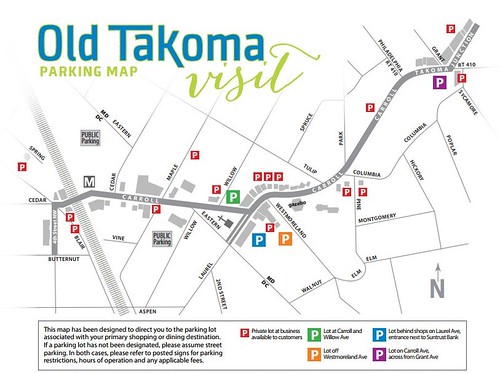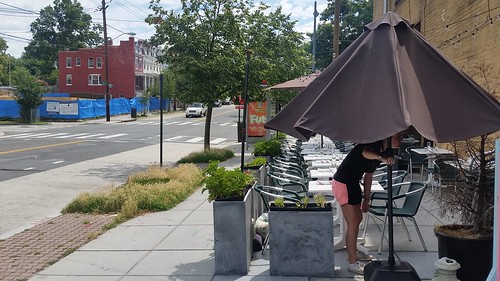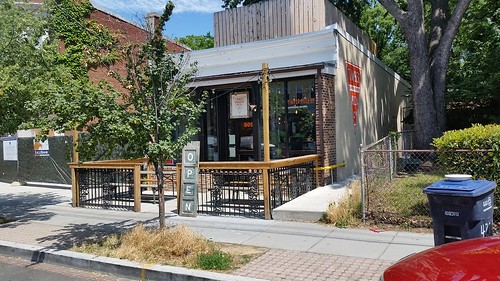I don't understand why restaurants don't take care of the treeboxes next to their outdoor patios
The blog entry, "(Updating) The 'soft side' of commercial district revitalization," was originally written in 2006, but I updated it slightly last year. From the entry:
One of the theories of commercial district development is called the Reilly Law of Retail Gravitation. The way I describe it is thusly: people choose to shop in the commercial district that has more and better stores that is also (more) convenient to get to.
But the Reilly Law is more than just the number of type of stores. This is why I talk about "soft aspects" in relation to it, in terms of external and "internal" factors. External factors concern the commercial district as a whole. Internal factors the store. I wrote a more expansive piece on this topic in September 2007 ("Analyzing retail store failure," although the post was originally titled, "Why ask why? Because").
External
(1) the quality and condition of the buildings;
(2) the cleanliness of the street and sidewalks in the district;
(3) public safety in the commercial district*
(4) transportation convenience (walking, biking, and transit as well as driving; this is captured by the Reilly equations, but is worth calling out, yes this includes parking but doesn't mean providing scads of it as much as it means addressing the issue, including parking wayfinding, also see "Parking districts vs. transportation/urban management districts: Part two, Takoma DC/Takoma Park Maryland" from 2015)*
(5) the condition of the street furniture, treeboxes, roadways and other aspects of the physical environment;
Old Takoma business district map

Internal
(6) the signage and windows of the businesses (this also has external characteristics);
(7) the quality and organization of the store interiors.
* added to the original list
Each influences whether or not people will choose to shop in your commercial district, or if they will merely continue to shop elsewhere because you provide no compelling reason for them to change their minds, attitudes, habits, and comfortability.
These factors plus the number and quality of stores and the issue of how to get there are the primary considerations influencing people's decisions about where to shop, eat, or play...
People compare our neighborhood and downtown commercial districts to shopping centers or to the best-in-class traditional commercial districts in your region. So to be equally competitive, we have to do many of the same things the shopping centers do, and primary is providing a clean environment.

Ruta del Vino gets great reviews in the Washington Post. Why they don't spend a little time paying attention to the environment around their facility is beyond me.
The same goes for the Timber Pizza Company. It gets lots of accolades. You'd think that the condition of the space outside their restaurant would be something they and their customers notice.

Although I do think that "the city" should provide some "basic maintenance" and coordination in all commercial districts, especially for those areas without business improvement districts or functioning "commercial district revitalization organizations" such as "Main Street."
Labels: commercial district revitalization planning, public space management, retail entrepreneurship development, retail planning, urban design/placemaking



2 Comments:
totally agree w/ you on this- it is the responsibility of the home owners to keep an eye on plants or trees in front of their properties if they are on the little strip between the sidewalk and road- and it is also up to the property owners to keep the sidewalks free of snow. Stands to reason that business owners should be doing the same
AE clicks has established itself as the most renowned digital marketing companies in Dubai. Instead of boasting ourselves, we let our work testify our credentials. and is best smm agency dubai .
Post a Comment
<< Home